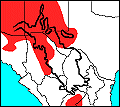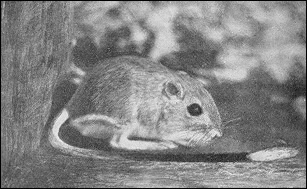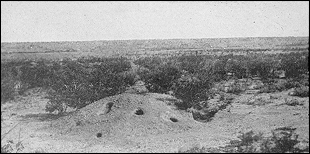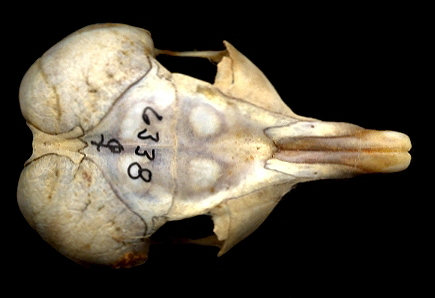


Dipodomys spectabilis. After Bailey, 1931.
This attractive, large kangaroo rat builds large mounds of dirt which are traversed by tunnels and chambers. Bailey (1931) notes that a "fair-sized mound measured 10 by 12 feet in extent and 18 inches high above the ground level and about the same depth below the surface, but some are larger and some smaller."

The large mound with multiple openings is the den of this large kangaroo rat. The nearby vegetation is creosotebush. After Bailey, 1931.

The kangaroo rats are notable for their large mastoid bullae (the two oval structures at the rear of the skull) forming the shell of the middle ear. These structures allow detection of the extremely low-frequency sounds made by the feathers of owls as the owls brake during an attack. The rodent then has a split second to make a "panic jump" that may—or may not— carry it out of harm's way.
Bailey, V. 1931. Mammals of New Mexico. North American Fauna No. 53, 412 pp.
Last Update: 12 Dec 2006